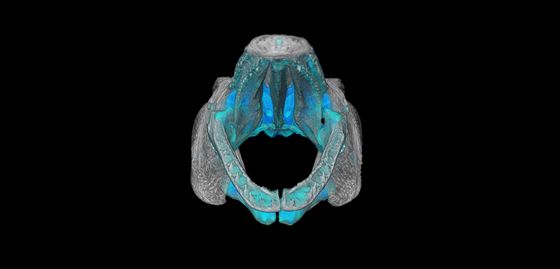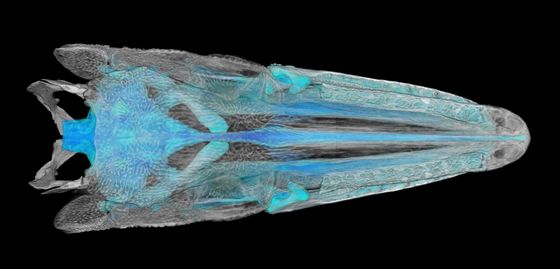Alligator Garr does not lose prey by 'inhaling' when biting into prey

by
The alligator gerbers that inhabit the freshwaters of America and Mexico are huge freshwater fish that grow up to 2 m in length under the wild, and the animals bred for appreciation purpose in Japan are released, and some are inhabited as alien species . It has become clear that not only the crocodile mouth and jaw that are the origin of the name Alligator Garr not only bite strongly to the prey, but also generate a strong suction when biting.
Feeding kinematics and morphology of the alligator gar (Atractosteus spatula, Lacépède, 1803)-561993.full.pdf
(PDF file) https://www.biorxiv.org/content/biorxiv/early/2019/02/27/561993.full.pdf
Alligator gar both sucks and chomps to catch its prey, new study finds | Ars Technica
https://arstechnica.com/science/2019/03/alligator-gar-both-sucks-and-chomps-to-catch-its-prey-new-study-finds/
Alligatorger has been inhabited on earth since the early Cretaceous nearly 100 million years ago, and is said to be a living fossil. The characteristic of such an alligator ger is a huge jaw like a crocodile, and when catching prey, like crocodile, it was thought to bite to the prey while snapping laterally.

According to Justin Lemberg, a researcher at the University of Chicago, the Alligatorger's jaw has so many joints that it is more mobile than a crocodile. 'I was interested in how many joints Alligatorgars move in their feeding behavior,' said Lemberg, who took over Alligatorger individuals from the
Lemberg and his colleagues let Alligator gar eat krill in the lab and record that with a high-speed camera. He also took a CT scan of the skull and created a high-resolution 3D model.
The alligator ger bites into many prey such as fish, waterfowl, frogs and small mammals by the two rows of teeth in the upper row of jaws that are lined up like a crocodile. 'Alligatorger eats anything that can be bitten and safely swallowed,' says Lemberg.

However, there is a problem that when an animal with a large jaw such as an alligator ger bites to prey in water, the water is pushed out and the presence of a predator is noticed by the prey. To cope with this problem, Alligatorger moves many joints in the jaw to inflate the jaw, and at the same time it bites and sucks in water, it quickly sucks the prey to the mouth.
Looking at the front of 3D models created by Lemberg et al.

You can see that the jaw opens sideways and is a system that sucks in the water and the prey.

From the top, the Alligator Gar's jaw opens ...

You can see the gubbing and the jaw spread widely.

These movements are made possible by the many complex joints Alligatorger has. 'Alligatorger is not only a living fossil that has lived for a very long time, but also its existence itself is a very interesting animal,' said Lemberg.

by J. Lemberg
Related Posts:







